 Dialogue
Dialogue How would you define the roaring Twenties?
What is something you remember from learning the past about the Roaring Twenties?
How has things changed from the Roaring twenties?
Video Countdown
 Title - Type B
Title - Type BAnthropologist- a person who studies the development of human societies and cultures
Consumer-a person who purchases goods or services for the pleasure of doing so
Desolate- deserted or empty
Economic Depression-a sustained, long-term downturn in economic activity in one or more
Economies-he wealth and resources of a country or region, especially in terms of the production and consumption of goods and services.
Mass Media-the means that are used to communicate to the general public
Revitalize-To bring something back alive, make new
Stereotype- a widely held but fixed and oversimplified image or idea of a particular type of person or thing.
 Title - Type A
Title - Type AKey Idea 1: The 1920's brought an age of glamour and prosperity for some parts of the country
 Question - Fastest Runner
Question - Fastest RunnerKey Idea 1 Notes
The nickname ,"Roaring Twenties" came from the many positive changes during the 1920's. For example, cities grew larger as people moved away from farms and began to work in factories.
Art, music, and literature took on bold new forms . Female dancers called "flappers" had cut their hair, wore short skirts, and wore makeup. "Jazz" was a new musical sound which blended European harmonies and blues to create a dance able beat
By the 1920's many Americans homes had electricity, which inspired the invention of the new appliances such as the toaster, refrigerator, vacuum cleaner, and washing machines.
After the war many Americans became consumers. They bought much of the new goods and services being produced in the United States.
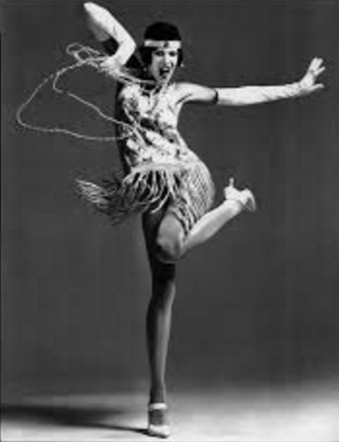
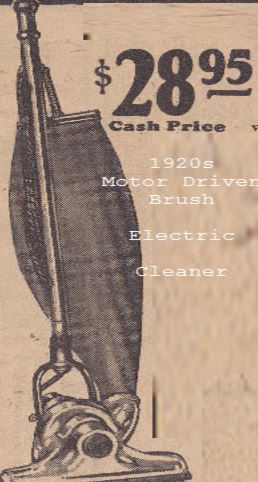
 Question - Fastest Runner1
Question - Fastest Runner1Key Idea 1 Notes Contined
Mass Media was a big growth that caused some of the excitement of the 1920's and of a unique american culture and helped spread it around the country.
A huge culture piece was the automobile. The new and affordable Model T. Ford was introduced by Henry Ford in 1908.Since more Americans Began to own cars, there was a greater need for road improvement.
With new roads came more tourist. In 1920 the US Route 1 followed the already existing Atlantic Highway and connecting Maine to Florida. It passed through SC from north to south west. Visitors were drawn to climate and culture of Southern states.
During this time the first commercial radio station in South Carolina, WSPA, it opened in Spartanburg. Families would listen to comedy acts and the newest jazz music. Movies also became popular, most were silent and had only piano or organ music playing.
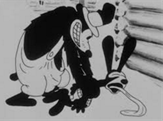
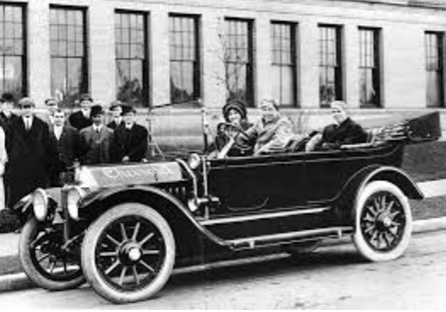
 Question - Fastest Runner2
Question - Fastest Runner2Key points
- Many Americans that became consumers bought much of new goods.
- There was a major growth in electronic devices in the 1920's
- Cities began growing and people began to grow away from farming to factories
- Many people began to be interested in the Arts
- Mass media help spread culture around the country
- The first commercial radio station was WSPA and movies were silent
- The Model T. Ford was introduced in 1908 but in the 1920's there was a bigger need for cars .
- There was an increase of tourist coming into the US because of the new roads that were being built.
 Title - Type A1
Title - Type A1Key Idea 2: The South and the rest of the country experienced a cultural awakening during the 1920's
Key Idea 2 Notes
The 1920's brought a cultural awakening renaissance in the United states. The Harlem Renaissance was a celebration of black literature,music, theater, and visual arts centered in New York City's Harlem district, but its influence spread to urban areas throughout the country.
Instead of backing out from white stereotypes about black cultures and achievements, African American artists and writers of the Harlem Renaissance looked to create a positive view of black life.
The poem, “The Negro Speaks of Rivers” by Langston Hughes, emphasized both the history of African and African American achievement and spirituality.
Zora Neale Hurston was an anthropologist who collected and preserved black folk culture, and she featured it prominently in her famous novel, Their Eyes Were Watching God.
Another awakening occurred in the South. The Southern Literary Renaissance was the response of writers and artists to criticisms that the South was an unsophisticated cultural wasteland. The attacks led to the revival of celebration of the South’s unique culture and heritage.
Southern writers like Julia Mood Peterkin and DuBose Heyward broke tradition by writing about black country folk.
Painters like Aaron Douglass and Jacob Lawrence created masterpieces that portrayed the everyday experiences of black people, both celebrating and suffering.
A group of 12 southern authors and poets known as the Southern Agrarians wrote about the rural experience in the South. Their collection of essays, I’ll Take My Stand: The South and the Agrarian Tradition criticized the growth of the industry in expense of the South’s rural way of life.
There were many artists from South Carolina that participated in this artistic movement. William H. Johnson came to Harlem from Florence in 1918. He is considered one of America’s major artists. Edwin Harleston was another painter and businessman. Harleston was a famous portrait artist and also founded the Charleston chapter of the NAACP in 1917.
Key Idea 2 Notes
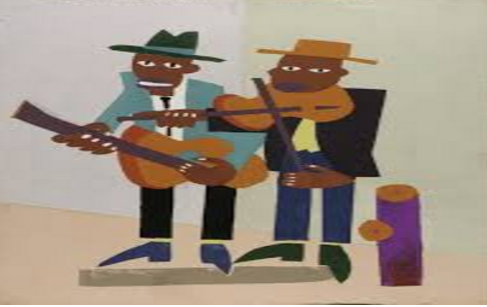
William H. Johnson

Aaron Douglas
DuBose wrote about the same experience. His book Porgy was considered groundbreaking because it rejected stereotypes and instead told a realistic story about black life in Charleston. Porgy ended up turning into an opera called Porgy and Bess and premiered on October 10, 1935 in New York City. The opera was worked with composers, George and Ira Gershwin, and featured an all-black cast; a first in American Theater. Porgy and Bess did not debut in South Carolina until 1970 because Jim Crow Laws prohibited black and white performers from sharing the stage.
Peterkin was white and was the first southerner to win the Pulitzer Prize for the fiction of her novel Scarlet Sister Mary. Her stories reflected her personal experience and interactions with blacks who lived and worked on her husband’s cotton plantation near Fort Motte. Her novels featured mostly black characters and she wove language and dialect of the Gullah people in her novels. Because of this, many southern whites found her books distasteful and criticized her as a traitor to her race.
Key Idea 2 Notes
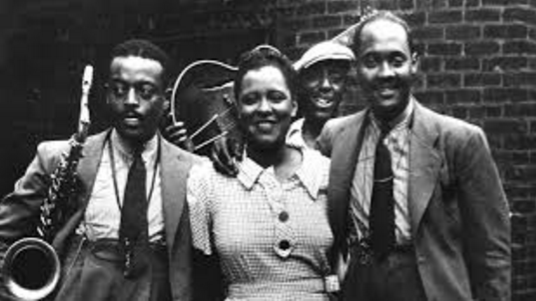
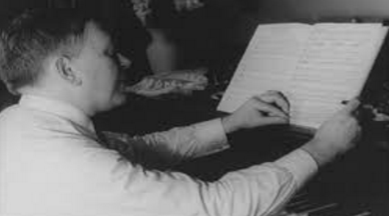
Key Idea 2 Key pionts
- The cultural awakening renaissance called the Harlem Renaissance was a celebration of black literature,music, theater, and visual arts centered in New York City's Harlem district.
- African American artist and writers of the Harlem Renaissance looked to create a positive view of blacks.
- The southern Literary Renaissance was the response of writers and artist to criticism that the south was an unsophisticated cultural wasteland.
- William H. Johnson came to Harlem from Florence in 1918, he is considered one of america's major artist.
- Edwin Harleston a famous portrait artist, he founded the Charleston chapter of the NAACP in 1917.
- Painter Aaron Douglass and Jacob Lawrence created masterpieces that portrayed the everyday experiences of blacks
- A group of 12 southern authors and poets known as the Southern Agrarians, they wrote about the rural experiences in the south.
- Julia Mood Peterkin was white and her stories reflected her personal experience and interaction with blacks who lived and worked on her husbands plantation. Because of her books many white southerners criticized her as a traitor.
- DuBose wrote about the same experience. His book Porgy was considered groundbreaking because it rejected stereotypes and instead told a realistic story about black life in Charleston. Porgy ended up turning into an opera called Porgy and Bess. The opera was worked with composers, George and Ira Gershwin, and featured an all-black cast; a first in American Theater. Porgy and Bess did not debut in South Carolina until 1970 because Jim Crow Laws prohibited black and white performers from sharing the stage.
 Title - Type A2
Title - Type A2Key Idea 3: the decade devastated the agricultural industry and the cotton crop in South Carolina.
Key Idea 3 Notes
Many South Carolinians faced a prolonged period of economic distress and loss.
The end of war was particularly hard on farmers who saw demand for their crops decreased dramatically.
In the spring of 1920, cotton prices we 40 cents per pound, but by December the price had dropped to 13 ½ cents. The boll weevil infested cotton fields across the south, it fed on fiber of cotton bolls. The boll weevil destroyed half of the entire crop in the state.
When cotton and tobacco were high, farmers borrowed money from banks to buy land, seeds, and chemicals to kill boll weevils, fertilizer to revitalize to poor soil.
Success of the silent movie, The Birth of a Nation, in 1915, contributed to the rebirth of the KKK in the 1920s. The movie depicted the Klan of the Reconstruction era in a positive light as a savior of white society. The new Klan had a strong following in small towns and big cities throughout the country. Publicly they promoted patriotic and moral standards, but secretly they supported hatred and violence.
During the 1920’s many textile mills modernized their villages by installing electricity, running water, and indoor plumbing.
Key Idea 3 Notes
Despite economic depression facing cotton farmers, the textile industry expanded during the 1920's and South Carolina led the nation in the production of cotton goods.Textile workers themselves saw few of the profits during this time.
To stay profitable owners looked for ways to reduce labor cost and maximize productivity.
Textile workers had to speed up and stretch out their work at the mills.They had to operate machinery at a faster pace which put a strain on them. This system led to labor strikes and they demanded changes
The general assembly made a special committee to investigate mill problems.
They claimed the strikes were because of poor living conditions that put more work on the employees than they could do.
The economies decreases, lumber by 68%, cotton by 33%, and mineral products by 63
A reported said “in almost every form of human progress South Carolina has sunk about as far as a state can sink”
The state became desolate,”Today thousands of acres of the South Carolina low country, once fertile fields and the foundation of fortunes and culture, lie idle and forgotten save perhaps by a few sportsmen, by waterfowl and swamp game . . . The march of progress and civilization had left in its wake decaying mansions, spectres now of a more glorious day, silent and vacant in their watch over the lands where once their masters reaped crops of large return, of indigo and rice.”
- Many South Carolinians faced a prolonged period of economic distress and loss.
The end of war was particularly hard on farmers who saw demand for their crops decreased dramatically. The boll weevil infested cotton fields across the south, it fed on fiber of cotton bolls. The boll weevil destroyed half of the entire crop in the state.
- Success of the silent movie, The Birth of a Nation, in 1915, contributed to the rebirth of the KKK in the 1920s. The movie depicted the Klan of the Reconstruction era in a positive light as a savior of white society. The new Klan had a strong following in small towns and big cities throughout the country.
- During the 1920’s many textile mills modernized their villages by installing electricity, running water, and indoor plumbing.
- Despite economic depression facing cotton farmers, the textile industry expanded during the 1920's and South Carolina led the nation in the production of cotton goods To stay profitable owners looked for ways to reduce labor cost and maximize productivity. Textile workers had to speed up and stretch out their work at the mills.They had to operate machinery at a faster pace which put a strain on them. This system led to labor strikes and they demanded changes The general assembly made a special committee to investigate mill problems. They claimed the strikes were because of poor living conditions that put more work on the employees than they could do.
Key Idea 3 Key pionts
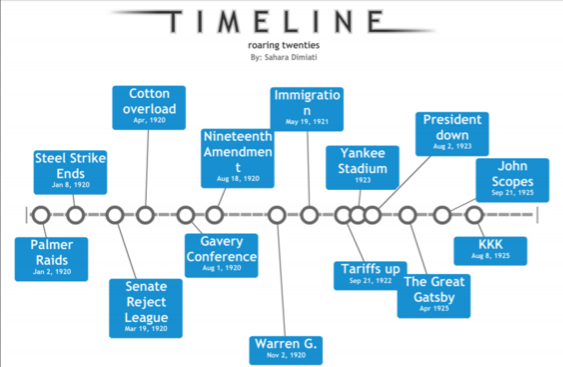
Palmer Raids- the start of intense government persecution in response to the post war Red Scare sweeping the nation
Steel Strike Ends- The Great steel strike of 1919 ends
Senate Reject League- The senate refuses to ratify Versailles Treaty(authorize US participation in the league of nations)
Cotton Overload- Cotton prices at New Orleans are up to 42 cents a pound, southern farmers starting planting more and more cotton leading to overproduction.
Garvey Conference- Black nationalist leader Marcus Garvey covens the first International Convention of the Negro people of the World in New York's Madison Square Garden.
Nineteenth Amendment- Ratified; granted women the right to vote
Warren G.- He was elected president with 60% of the popular vote and 75% of the electoral vote.
Immigration- Congress passes immigration Restrictions
Tariffs up- congress passes the Fordney-McCumber Tariff raising tariffs to protect the American Market manufactures.
Yankee Stadium- "The house that Ruth Built" is constructed" is constructed in the Bronx
President down- President Warren G. Harding dies of a stroke
The Great Gatsby- F. Scott Fitzgerald publishes "The Great Gatsby".
Steel Strike Ends- The Great steel strike of 1919 ends
Senate Reject League- The senate refuses to ratify Versailles Treaty(authorize US participation in the league of nations)
Cotton Overload- Cotton prices at New Orleans are up to 42 cents a pound, southern farmers starting planting more and more cotton leading to overproduction.
Garvey Conference- Black nationalist leader Marcus Garvey covens the first International Convention of the Negro people of the World in New York's Madison Square Garden.
Nineteenth Amendment- Ratified; granted women the right to vote
Warren G.- He was elected president with 60% of the popular vote and 75% of the electoral vote.
Immigration- Congress passes immigration Restrictions
Tariffs up- congress passes the Fordney-McCumber Tariff raising tariffs to protect the American Market manufactures.
Yankee Stadium- "The house that Ruth Built" is constructed" is constructed in the Bronx
President down- President Warren G. Harding dies of a stroke
The Great Gatsby- F. Scott Fitzgerald publishes "The Great Gatsby".
John Scopes- School teacher John Scopes is arrested for teaching evolution.
KKK- Forty thousand members of the Klu Klux Klan marched in Washington.
Explaining the Time line
 Title - Type B1
Title - Type B119th Amendment- Granted Women’s Suffrage
Why did it take so long for this amendment to pass?
Why was women’s involvement in politics viewed as inappropriate?
Why is it important to have the right to vote?
DEBATE!!!!!!!!!
Divided into 2 groups Group 1= Students 13 years of age and older should be allowed the right to vote
Group 2= Students 13 years of age should not be allowed to vote 3 reasons for your argument Present
 Dialogue 1
Dialogue 1Discussion Questions
1.Why was this decade known as the “Roaring Twenties"?
2.What are five innovations and entertainment sources Americans enjoyed during the 1920's?
3. During the growth of tourism, why do you think Northerners were drawn to the south?
-Answers will vary
4. What was the Harlem Renaissance?
5.What was the purpose of the Southern Literary renaissance?
6.What led to agricultural depression in South Carolina?
7.What social attitude contributed to the return of the KKK?
8.How did textile mills change during the 1920's? Why did factory owners implement the “Stretched-out” system?
1.Why was this decade known as the “Roaring Twenties"?
- technological advancements
- an economic boom
- industrial growth
- a cultural renaissance
- the rise of mass media.
2.What are five innovations and entertainment sources Americans enjoyed during the 1920's?
- The automobile,
- refrigerator toaster
- vacuum cleaner
- washing machine
- telephone radio
- silent movie
- jazz music
3. During the growth of tourism, why do you think Northerners were drawn to the south?
-Answers will vary
- the South’s climate
- scenic coastline
- history
- Charleston was popular due to city’s historic sites and architecture.
4. What was the Harlem Renaissance?
A cultural movement in New York City that produced a variety of literature, music, theatre, and visual arts to celebrate the African American identity and heritage.
Discussion Questions Answers
5.What was the purpose of the Southern Literary renaissance?
Southern writers and artist wanted to use are and literature to portray the South in a positive light and to celebrate the uniqueness of the Southern culture and heritage.
6.What led to agricultural depression in South Carolina?
- After World War 1 the demand for exported goods like cotton decreased.
- Cotton and tobacco farmers had overproduced leading to a plunge in value and pricing.
- Also a small beetle known as the boll weevil began infesting cotton fields across the South in 1921
7.What social attitude contributed to the return of the KKK?
- After many Europeans immigrated to the US,some Americans feared that their culture would be corrupted by foreign ideas.
- Members of the Klan returned with the goal of restoring the American way of life.
8.How did textile mills change during the 1920's? Why did factory owners implement the “Stretched-out” system?
- Many textile mills modernized their technology during the 1920's installing running water, electricity, and indoor plumbing.
-
Factory owners wanted to maximize productivity and reduce labor cost, so they implemented the “Stretched-out” system, which demanded that workers operate more machines at a faster pace.
Discussion Questions Answers
The End
What sports do you enjoy watching?
How different do you think sports would be today if the leagues were segregated?
How might sports have affected racism during the early 20th century?
Considering that racial segregation laws weren’t removed until the Civil
Rights Movement in the 1960s, why did baseball leagues become integrated in 1947?
The End 1
By 1920, baseball had become the nation’s most popular sport.
African Americans had played pro baseball as early as 1870s, always on segregated teams.
The negro Leagues stopped and started in the early 1900s but really got off the ground in 1920.
During the Golden Age in the twenties, seven leagues were founded and achieved success. The Negro Leagues lasted until 1947, when baseball segregation was ended by Happy Chandler, the commissioner of Major League Baseball. He stated that he could not in good conscience refuse to let blacks and whites play baseball together after they had fought in a war together. Later that year, Jackie Robinson became the first black player to join the National Leagues. Racist fans treated him badly, but Robinson kept his dignity as he paved the way for other black players
The End 2
- Player’s name
- Player’s photo(Drawing)
- Years played in the Negro Leagues
- Player’s Position
- Team(s) Played with
- Brief Biography
Create a baseball card including:( create it about a player from the 1920’s)
What have you learned about the Roaring Twenties that you didn't know?
The End 3
~The End~